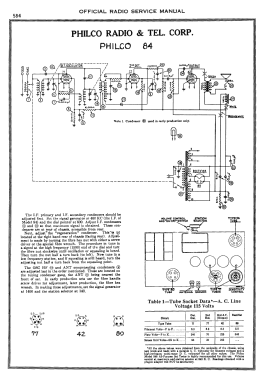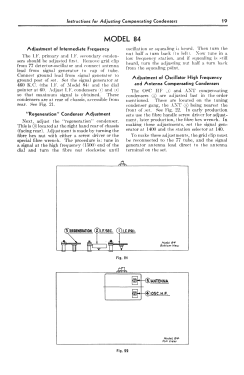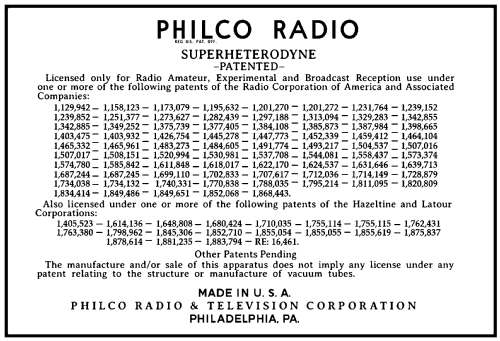84B Middle
Philco, Philadelphia Stg. Batt. Co.; USA
- Pays
- Etats-Unis
- Fabricant / Marque
- Philco, Philadelphia Stg. Batt. Co.; USA
- Année
- 1935
- Catégorie
- Radio - ou tuner d'après la guerre 1939-45
- Radiomuseum.org ID
- 139539
Cliquez sur la vignette du schéma pour le demander en tant que document gratuit.
- No. de tubes
- 4
- Principe général
- Super hétérodyne (en général); FI/IF 460 kHz
- Gammes d'ondes
- PO uniquement
- Tension / type courant
- Alimentation Courant Alternatif (CA) / 115 Volt
- Haut-parleur
- HP dynamique à électro-aimant (électrodynamique)
- Matière
- Boitier en bois
- De Radiomuseum.org
- Modèle: 84B [Middle] - Philco, Philadelphia Stg. Batt
- Forme
- Modèle de table vertical cathédrale (dessus arrondi)
- Dimensions (LHP)
- 305 x 360 x 200 mm / 12 x 14.2 x 7.9 inch
- Remarques
- Model 84B was the third of a series (models 80B, 81B, and 84B) of low cost 4-tube cathedrals that used a regenerative combined IF/detector stage to maximize sensitivity with very few components.
The early version (1934) had a round speaker opening with three vertical bars. The middle version (1935) had a lyre-shaped opening with three vertical bars. The late version (1936) had a continuous arch-shape extending upward from the base, and an oval speaker opening with five mostly vertical bars.
Model 84B continued onward for one more year as model 37-84B, with two more cabinet styles, and a new tube lineup (but still using a similar circuit).
- Prix de mise sur le marché
- 20.00 $
- Source
- Philco Radio 1928-1942
- Source du schéma
- Rider's Perpetual, Volume 4 = ca. 1934 and before
- Schémathèque (1)
- Philco 1928-36 Wiring Diagrams, Parts Lists, and Essential Service Data
- Schémathèque (2)
- Cathedral & Tombstone Radios (page 194.)
- Auteur
- Modèle crée par Thomas Albrecht. Voir les propositions de modification pour les contributeurs supplémentaires.
- D'autres Modèles
-
Vous pourrez trouver sous ce lien 4120 modèles d'appareils, 2227 avec des images et 3768 avec des schémas.
Tous les appareils de Philco, Philadelphia Stg. Batt. Co.; USA
Collections
Le modèle 84B fait partie des collections des membres suivants.
Contributions du forum pour ce modèle: Philco, Philadelphia: 84B
Discussions: 1 | Publications: 8
Salve ai soci , sono alle prese con un problema di Ronzio su questo ricevitore . nonostante abbia gia sostituito gli elettrolitici il ronzio resta. Ho notato che mettendo a massa la griglia della finale ( 42 ) il ronzio smette , quindi presumo che il difetto sia da reputarsi nella zona finale audio. Un'altra cosa che mi sembra anomala e'la tensione troppo bassa sull'anodica e sulla griglia schermo della 77 nella sezione MF ovvero 50sull'anodica e 35 sullo schermo , nn so anche questo possa portare il ronzio ho sostituito i vari componenti in quella zona ma nulla e' cambiato , se qualcuno puo indicarmi come provare a risolvere il problema le sarei grato . Distinti saluti
GABRIELE,
Gabriele Seccia, 08.Dec.11











































